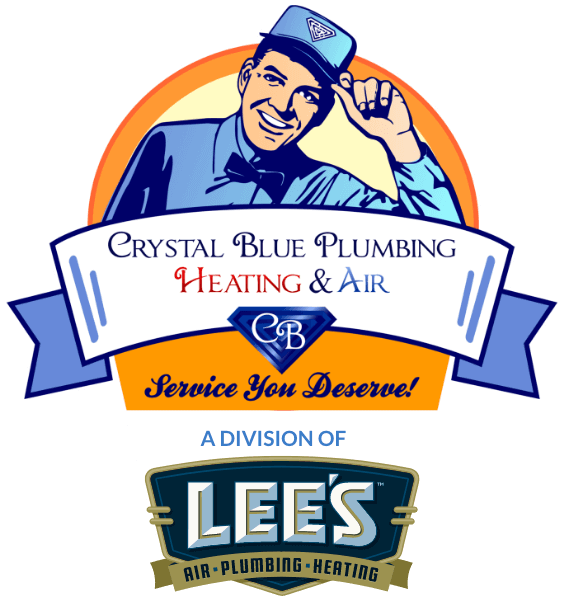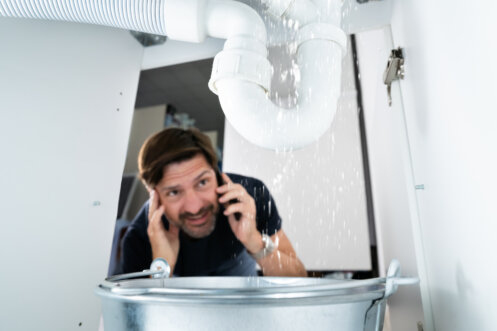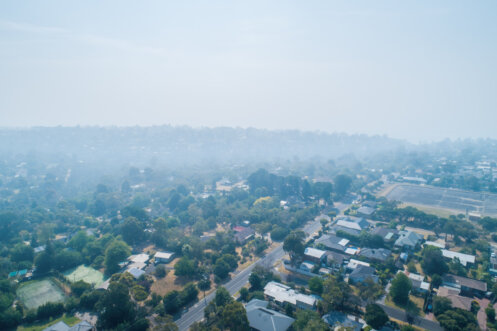Common Emergency Plumbing Scenarios and How Professionals Handle Them
Plumbing problems don’t usually give you a heads-up. Everything seems normal, then suddenly your ceiling’s leaking or your toilet’s flooding the floor. It feels like chaos, but for plumbers, this is just another day at work.
At Crystal Blue Plumbing Heating & Air, in Sacramento, CA, our team of expert plumbers has encountered everything from late-night leaks to full-blown pipe bursts. When trouble strikes, it’s comforting to know that our trained professionals are on hand to swiftly and effectively restore normalcy.
Burst Pipes and Rapid Response
Few plumbing emergencies hit harder than a pipe that bursts without warning. Whether it happens after a cold snap or during a renovation gone sideways, water moves fast. Once a pressurized pipe gives way, gallons pour out in minutes. You may hear a loud pop, or you might just spot water coming through the ceiling. A burst pipe needs quick action, not guesswork. Shut the water off at the main valve as fast as you can. Then a plumber steps in to assess the damage. They’ll locate the break, cut out the damaged section, and replace it with new piping.
Depending on where the pipe sits, the job might also involve cutting into drywall or flooring. The professional has to work cleanly and quickly, especially if water has already soaked through the structure. Drying out the area matters just as much as replacing the pipe. Leaving damp materials behind can cause bigger problems later. A professional brings tools for both sides of the job: the repair and the recovery.
Backed-Up Sewer Lines and Messy Diagnoses
Sewer backups are the kind of plumbing problem you smell before you see. They often start slow, with a toilet that gurgles or a drain that bubbles. But when the pressure builds and the line backs up fully, things get messy fast. Water starts coming up instead of going down. Toilets won’t flush. The shower might fill with dirty water. This usually points to a blockage deeper in the line. It could be tree roots that have found their way into aging pipes. It might be a buildup of grease and debris.
The fix starts with a camera inspection. A plumber feeds a waterproof camera into the sewer cleanout to find exactly where the blockage sits. Once they know the cause, they choose a method—hydro jetting for soft buildup, a mechanical auger for roots or dense clogs. The goal is to clear the line without damaging the pipe. Once clear, a second camera check confirms that everything’s flowing again. This is not the kind of job you can solve with a plunger.
Water Heater Failures and Quick Decisions
When your water heater gives out, it usually doesn’t do so quietly. You may notice lukewarm water or rust-colored taps. In more dramatic cases, the tank leaks or floods the surrounding area. A failed water heater affects everything from showers to laundry. The cause might be a worn-out heating element, a broken thermostat, or sediment buildup inside the tank. If water is leaking, the first move is to turn off both the power supply and the water line to the unit.
Our professional plumbers will meticulously inspect the tank to determine if it can be repaired or if a replacement is necessary. For older units, replacement is often the best course of action. We’ll disconnect the old system, flush out any remaining water, and install a new one that meets your home’s hot water needs. We’ll also ensure that the pressure relief valve is functioning properly and that the ventilation is adequate for gas-powered units. With tankless systems, the repair might involve flushing scale from the heat exchanger or replacing a failed sensor. Our thorough approach ensures that your hot water system is in top condition.
Flooded Basements From Sump Pump Failure
If your basement suddenly takes on water during a storm, a failed sump pump might be the reason. These pumps sit in pits below floor level and keep groundwater from building up. When they work, you never notice them. When they fail, water rises quickly. The pump might have lost power due to a power outage or a tripped breaker. The float switch could be stuck. Or the discharge line could be clogged.
A plumber will check each part of the system to identify the cause of the failure. If the pump still runs but doesn’t drain water, the problem may be outside, frozen or blocked discharge pipes can push water back into the pit. If the pump won’t turn on, the fix could be electrical.
Some plumbers bring backup battery units that give you temporary protection until the main system can be repaired. These units are meant to kick in automatically when the main system fails, providing a temporary solution to keep your basement dry. Once the problem is solved, they’ll pump out the standing water and check for water damage around the foundation or electrical panel. Drying the area and restoring the pump is only part of the solution. Keeping the basement dry next time takes planning.
Toilet Overflows That Spread Quickly
A toilet that won’t stop rising is more than an inconvenience. It becomes a fast-moving problem when the water spills onto the floor. Overflowing toilets often start with a blockage in the trap or the line below. Sometimes it’s too much paper. Other times, it’s something that never should have been flushed in the first place. When a plunger doesn’t work and the water keeps rising, you need someone to act fast. A plumber will usually start by shutting off the water supply behind the toilet.
Then they’ll use a flange plunger or a toilet auger to clear the trap. If that doesn’t work, they’ll pull the toilet and check the drain directly. Once cleared, they reset the toilet and check for leaks. In homes with older piping, repeated overflows might point to a problem further down the line. In that case, a camera inspection helps spot breaks or buildup beyond the bathroom.
Gas Line Leaks That Call for Immediate Action
Not all plumbing emergencies involve water. If you detect the distinct smell of gas in or around your home, it could indicate a gas line leak. These lines connect to your stove, furnace, or water heater. While gas leaks are rare, they are extremely serious. If you notice a sulfur smell or hear a hissing noise near an appliance, it’s crucial to immediately shut off the gas supply leave your home.
The fix could be as simple as tightening a connection or as involved as replacing a length of damaged pipe. In some cases, the line has to be rerouted. After the repair, the system gets pressure tested before service is restored. Gas leaks aren’t something you wait on or try to patch yourself. This is where professional knowledge and proper permits matter most.
Leaking Fixtures That Hide Damage
A dripping faucet or a slow leak under the sink might not seem urgent at first. However, leaks like these cause long-term damage if they go unchecked. Water can rot cabinets, stain floors, and weaken subflooring. Sometimes the leak isn’t even visible. You might notice a musty smell or see water pooling near baseboards. A plumber starts by finding the exact source. It could be a worn washer inside the faucet, a cracked supply line, or a loose connection under the counter.
Access becomes part of the challenge if the leak comes from behind the wall. Once found, the fix might involve tightening a nut or replacing a length of pipe. With bathroom fixtures, leaks can hide behind tile or under tubs. Fixing those areas without making a mess takes skill and patience. After the leak is sealed, the area has to be dried and checked for signs of mold or soft spots.
Call Us ASAP for All Plumbing Emergencies
Plumbing emergencies never wait for a convenient time, but with the right help, they don’t have to turn into long-term disasters. Quick thinking, steady hands, and the right tools make all the difference. If your pipes give out or your sewer and drains back up, Crystal Blue Plumbing Heating & Air is ready to step in and get your home back on track. We also provide heating and air conditioning services, including system installation, repairs, maintenance, and indoor air quality solutions for residential and commercial properties.








